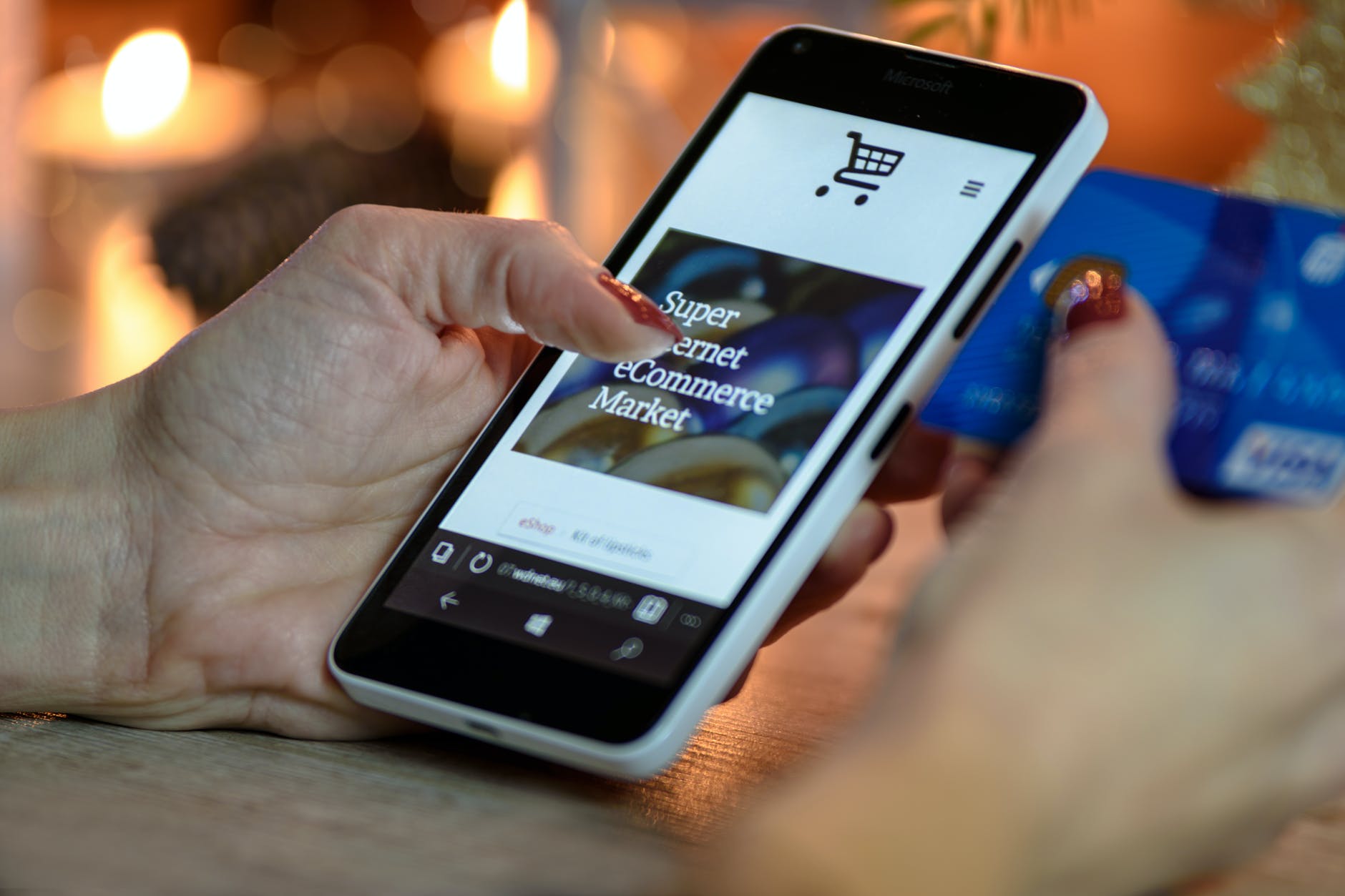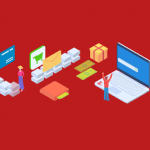Address: Front office : Twin Centre Tower A 6th floor Corner boulevard zerktouni and boulevard El Massira Casablanca Back office : espace ghazwani, Boulevard Ifni, Casablanca
Opening hours :Mon - Fri: 9am-12.30pm and 2pm-6pm Sat: 9am-12pm

27.09.2021 | Bh Adviser | Morocco
E-commerce is a small but rapidly growing sector in Morocco, has the second-highest internet penetration rate in Africa.
The absence of online payment systems, however, is a major obstacle, Limitations on outbound hard currency flows also restrict cross-border purchases. According to Global Findex data, only 2% of the total population in Morocco made an online purchase in 2020, Internet payment systems, such as PayPal,are readily available. Google and Bain & Company predict that online sales in the MENA zone will grow by 28% each year until 2022, resulting in an increase in revenue from $8.3 billion in 2017 to $28.5 billion in 2022
Online commerce differs from traditional commerce in that there is no physical shop window, structures and processes are dematerialized, and there are additional costs for transport and shipment
And most importantly, the user can’ t touch and feel the product.
Luckily, to meet these challenges, the online e-commerce business owner has globalized tools and services that make nearly anything possible, even with limited investment, Let us take you through the 10 steps in this guide to e-commerce, to get you from idea to launch.
The steps to follow to launch a successful e-commerce business are as follows:
A business that sells products online is an e-commerce business. It can come in all shapes and sizes depending on the type of product it sells and the level of outsourcing it involves.
You can feel a little overwhelmed as you go through the e-commerce basics you will need to master: manufacturing, packaging, storage, supply, customer service, and, of course, the online shop.
A fully-fledged e-commerce business will manage the majority of these steps, but even then, you will outsource transport and delivery, and perhaps the storage, to external partners
And in the ultimate case of drop-shipping, the entire cycle of your product is outsourced, and all your e-commerce business does is sell and market a product online
In the case of a virtual product such as downloadable software, the stocking and logistical problems disappear.
In fact, the steps you need to take depend on the product you are selling and the model you are choosing
There are tools and partners for every step of the process that can help you market your product,Let’s explore them.

When starting an e-commerce business, the first thing you need is a business idea, Put constraints aside and think with an open mind about the product or service you want to create and sell.
Then whether it’s a home-based business funded from your own pocket, or a global brand funded by investors will be secondary.
Once you have an idea, you will study the markets, the target audience, and the concept, to develop a business plan: the model for your business from an economic point of view.
You can then register the company, design its identity, and develop your products. Set up the manufacturing and packaging, create your online shop and find the right storage and fulfilment solution. And finally, you launch your sales and marketing
Step 1: Generate a business idea
So many things depend on your e-commerce business idea, and this is the first thing to define. If you are thinking of starting an online business, you likely already have the idea. Ideas can be very simple or very complex..
They may require a lot of preparation or nothing at all. The simpler it is, the more likely you are to have competition. The harder it is, the more you will have to spend. A good business idea is one that turns into a profitable business.
You can’t really know this in advanced, but if you do your market research and develop your business plan, chances are that your business idea has already evolved into something feasible.
Tips for brainstorming business ideas
Your business idea can be a life-time project or something that comes to mind while taking a shower. You can brainstorm, read magazines, and do research on the internet. Remember that you should be prepared to grow and improve your idea based on your research and feedback.
The pub test: Go to a Coffee shop, order a drink, and explain your idea to a stranger. Does it work?
The Grandma Test: Can you explain your idea to your grandma? If you can, your concept is clearly enough and intelligible.
Step 2: Research and preparation
For some people finding ideas is easy, for others it is difficult. Once you have found your business idea, you need to test and refine it. To do this, the first step is to undertake market research and a feasibility study.
The objective is to define the size and features of the market for your product. Is there a market for your product idea? Can the product really be produced? You should also project your business into the future. What will be the life cycle of the product, and are there any risks or time pressures associated with your product?
Tips for carrying out and preparing market research
The internet is full of information and market data. You could be able to find most of what you need online. If you need to do market research, do it online too. Undertake a survey, interview experts in the field you are entering, and check the regulatory requirements your product must meet
Online research: While you are exploring the market, ask your future customers questions in a survey. See if you can reach them.
Be self-critical: You are in the creation phase, and it is natural to be optimistic, and to see only possibilities. However, at this stage it is important to be critical of the data and try to recognise the risks associated with your business idea
Step 3: Creating a business plan
This is the step you’ve been dreading: the business plan. Let’s face it, there’s really no way around it. A business plan describes the economics of your business and will help you focus on value and avoid the pitfalls, so that you can build a profitable online shop.
A business plan, however, can take many forms and have many levels of depth. It doesn’t have to be a painful exercise.
Tips for drawing up a business plan
In a business plan you will define your product idea in step 1, describe the market you have studied in Step 2 and build assumptions for capital investment, sales growth, fixed costs, price, gross margin.
Use assumptions: In the business plan, you will make your assumptions. The more you know about the hypotheses on which you have built your business, the better you will be able to develop it.
A good business plan is a living document: The business plan evolves as your knowledge and experience change. It is a document that you need to revisit and improve continuously through the process of creation.
Use key business performance indicators for e-business: For the experienced entrepreneur, it may make sense to base the business plan on such things as the lifetime cost of acquiring a customer, average order value, conversion rate, customer retention, and lifetime value of customers
Step 4: Registration of the company
To start a business, you will need to incorporate a company at some point. On the one hand, the company must bear the costs you incur in the process of setting up, and on the other hand, setting up and running a business does involve money. Once you have the business plan in hand, you are ready to register a corporation.
Tips for registering your business
It is useful when registering a companyto check out the various types of companies and to think about the state or country in which you need to establish it.
You also need to decide on the name of the business , You may have already decided what you want to call it.
Give it a positive name that relates to your own name or the product idea you have had.
Ask Around: Entrepreneurs are wonderfully good to each other. Ask anyone who has started a business for advice and guidance, and they will gladly give it, Don’t be shy.
Keep start-up costs down: At this stage you have no assurance of business success or even income, so you need to keep set-up costs as low as possible. Stick to basic service packages at the lowest possible costs.
Keep operating costs low: The time to first sale can be long, so you also need to keep your operating expenses low. Be cautious.
Step 5: Developing the corporate identity
As part of your product idea in Step 1, you have probably already come up with ideas for a brand, logo and name for your shop. The aim of this step is to turn these things into business assets. It’s a good idea to get expert help with the design.
Tips for developing your corporate identity
For your business branding, you can go through a full branding process, but it may be enough to work around the business name, create a matching logo with a designer and define key brand features such as colours and font types,Also reserve a domain name at this stage.
Social media profiles: Once you have fixed on a domain name or shop name, you should open social media profiles with these names. The profiles don’t need to be active, but if you save them now, you won’t have any nasty surprises later.
Register your trademark: If you are going to invest in a logo and branding, you should also invest in registering a trademark, especially if you are in a competitive sector.
Step 6: Developing the product
You do not have to finish step 5 to move on to this step,Depending on the type of product, there may be more or fewer steps in your product development process.
What is essential is that you have your finished product at the end of it , Product development includes feasibility research, product design, prototyping and, if the product is exceptional and uses an innovative approach, perhaps patenting.
Crowdfunding: Once you have the first iteration of your product, a great way to get it out into the marketplace is to launch a crowdfunding campaign.
It can be stressful and difficult, but you won’t regret doing it , Outsourcing: You are likely to use external providers in this stage.
You need to use specialists, pay a decent price for the work they do and draw up contracts to protect your intellectual property.
Step 7: Making and packaging
Once you have a physical product and your prototype in hand, you are ready to set up the production.
You will find more opportunities for outsourcing than you think, and the first decision to make is whether to set up your own production, which is time and capital intensive, or to outsource part or all of the process.
You can think of packaging as an extension of the production process.
Tips for setting up your shop
First you should choose your platform. If you already have a website up and running, you can upgrade your site’s capabilities for e-commerce. You can also launch an e-commerce site as your main site, or even launch a shop without a site. Once you have selected, the process is simple and guided by the platform itself.
For the actual packaging, seek specialist advice on the design, and then decide whether the packaging is done at the time of manufacture or delivery
Statutory requirements: Depending on the type of product and the market you are in, there may be statutory requirements or certifications that your product must pass. Do some research
Labelling: For some products and markets, you will need to label your product to identify the ingredients.
Step 8: Create your online shop
You have everything you need to create your online shop on an e-commerce platform.
Pick your platform and start setting up your shop by adding the product, designing the storefront, hooking up the payment solution to your business and entering the stock information.
The best online shop designers will guide you through this process.
Tips for setting up your shop
First you should choose your platform. If you already have a website up and running, you can upgrade your site’s capabilities for e-commerce. You can also launch an e-commerce site as your main site, or even launch a shop without a site. Once you have selected, the process is simple and guided by the platform itself.
You can also launch an e-commerce site as your main site, or even launch a shop without a site. Once you have selected, the process is simple and guided by the platform itself.
Choose the right platform: Do some digging before you choose , Maybe even test a few.
Usability is important, as this is a tool you will use daily.
Marketing channels: Think about marketing channels at this stage.
Some platforms are better connected to certain types of channels, for example SEO, affiliate marketing,, Amazon, Facebook, Instagram or Snapchat.
If you already know your marketing channels, check the e-commerce platform for compatibility
Step 9: Inventory, logistics, order fulfilment and customer service
For a material product that you manufacture, storage becomes a major challenge. You may need to simulate your entire supply chain and know your inventory turns to determine the extent of your storage needs.
If the product is manufactured and shipped on demand, you don’t need to worry about storage, and you can go straight to the challenge of fulfilment, which is transporting and delivering the sold product to the buyer.
At this stage you should also consider your customer service options. Your customer service should be able to drive fulfilment, make changes to deliveries and inform the customer.
Tips for storage, logistics and order fulfilment
Once your factory location is defined, it’s time to find your storage location and supplier.
The next step is to find ways to get your product from storage to the buyer and to set up information collection points that allow your customer service department to monitor every step of the process.
Storage location: Optimally, find a storage solution close to your manufacturing site or target market.
Storage is easily available but can become a significant cost element.
Simplicity: The more steps in your process chain, the more sources of error you will have. Make your setup as simple as possible.
Step 10: Business sales and marketing
With the production and support chain in place, you can now launch your online shop and start marketing your e-commerce business.
After all the time of evolving your idea, perfecting your product, and finding ways to deliver the product to people, you will feel that the most important part of the job has been done.
After all the time of evolving your idea, perfecting your product, and finding ways to deliver the product to people, you will feel that the most important part of the job has been done
Tips for sales and marketing
Firstly, define your sales and marketing channels and give the business as much visibility and reach as possible without advertising, as a smooth launch. Then set up a launch campaign for your business and find profitable marketing and sales channels for your product.
Then set up a launch campaign for your business and find profitable marketing and sales channels for your product.
Win or learn: You will obviously try and test marketing approaches that don’t work.
Document and learn from every campaign and initiative you undertake, so that if an investment does not pay off in monetary terms, you will have learned from the experience and will do better in your next campaign.
E-mail subscription: E-mail marketing is one of the best channels for e-commerce, assuming you already have some subscribers to an e-mail list.
Email contacts are gold, so start gathering them early in your business.
Now conquer the world When you complete the 10 Steps of this process, your e-commerce business is on its way with potential access to a global market of 30 million of consumers.
Rather than the end of a process, this is the starting point of a new adventure.
You will be marketing your product, people will buy and consume it, they will give you feedback, and you will wish to improve it and grow your business.
The road to conquering the world may be long, but you have just taken the first step in this journey.




